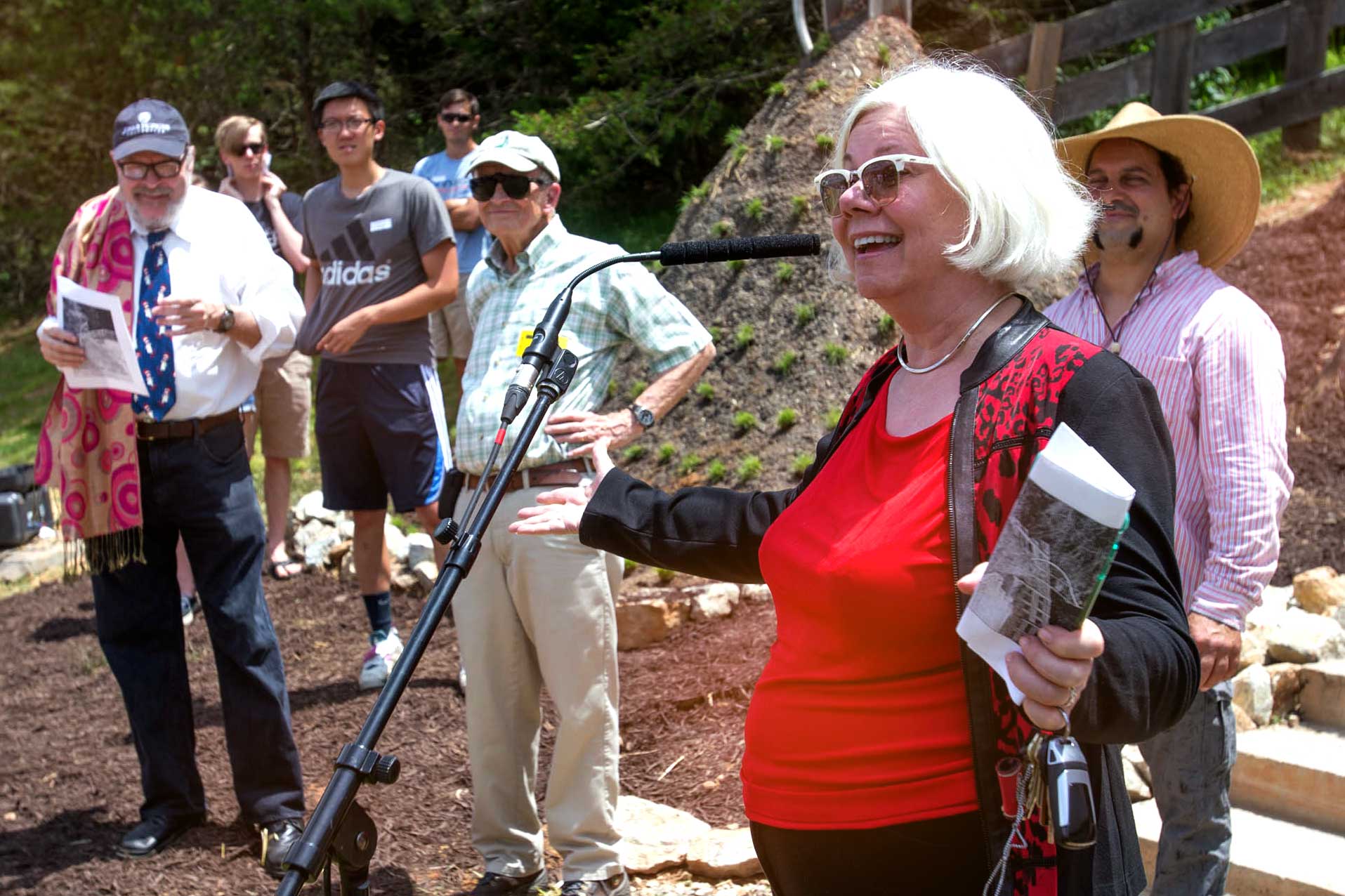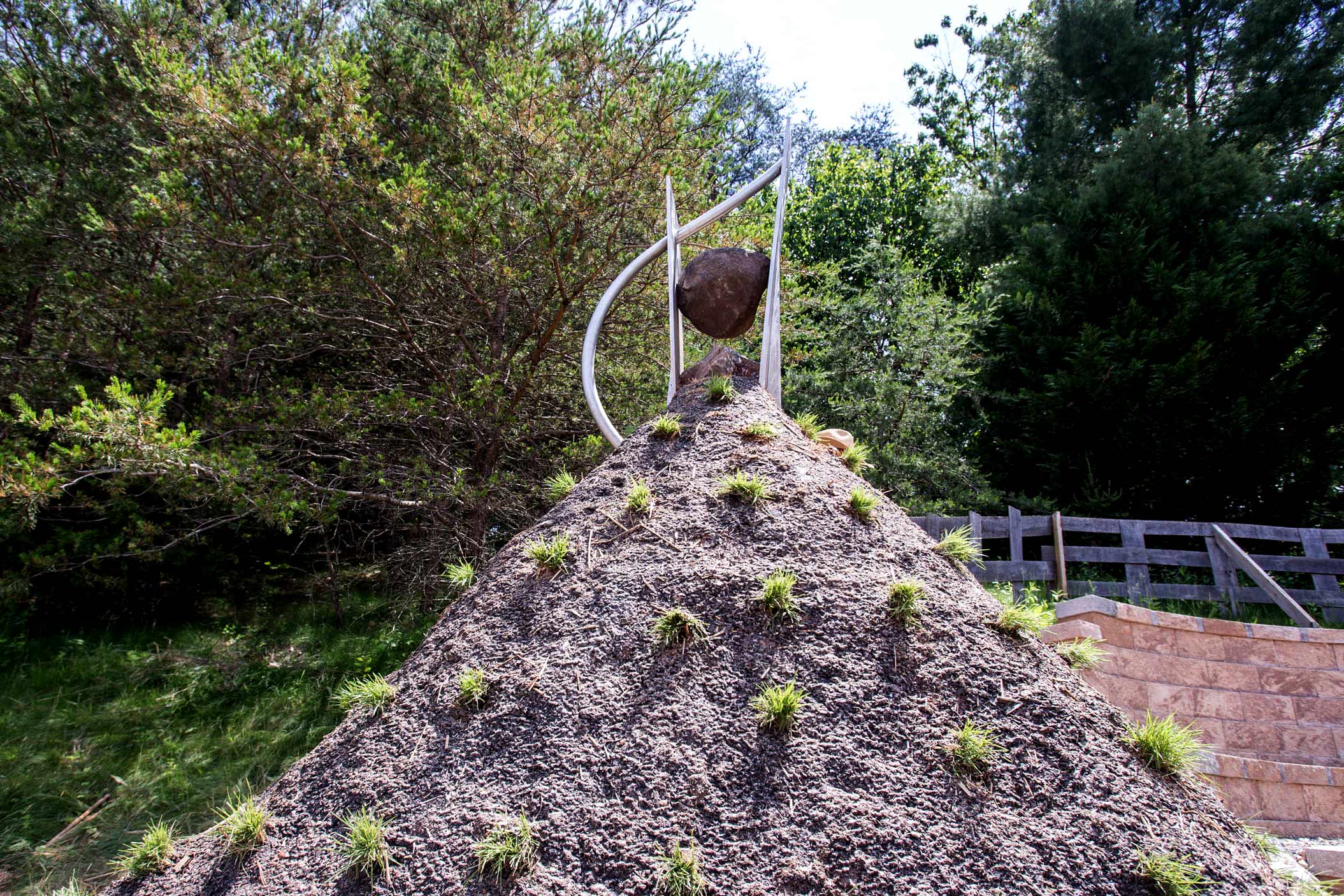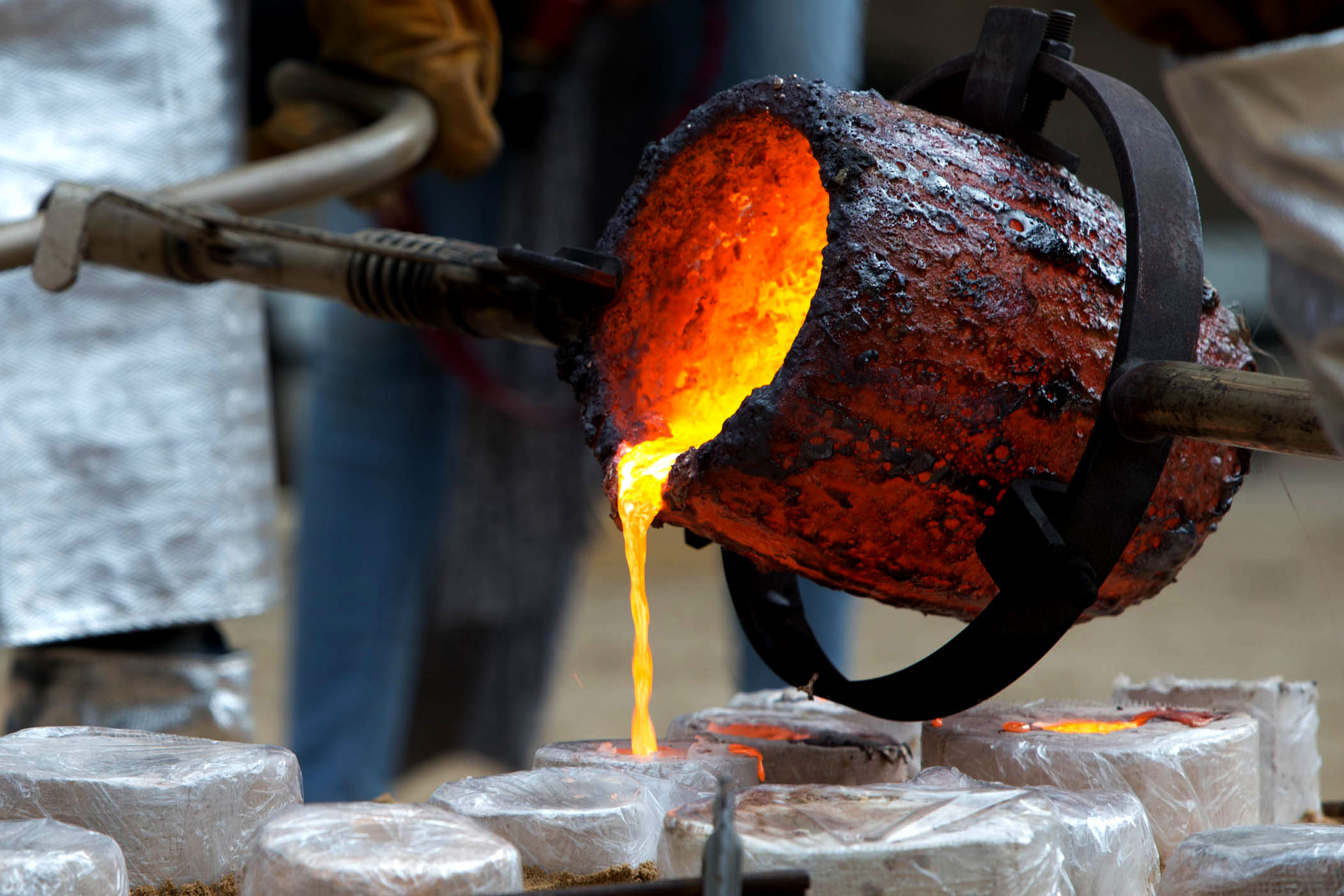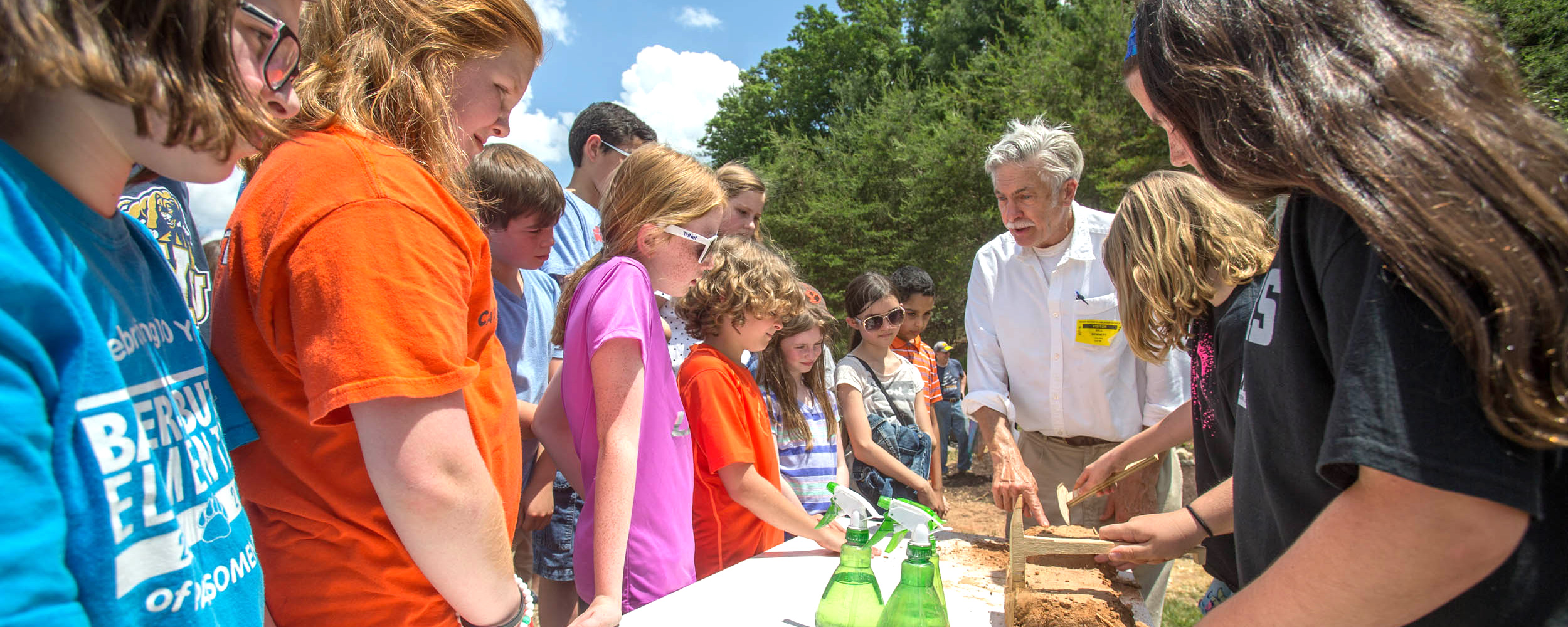University of Virginia sculpture students spent three years creating an archaeological site at Charlottesville’s Baker-Butler Elementary School. Fifth-grade students will spend three decades unearthing its treasures.
The site was unveiled Tuesday to cheers from more than 600 Baker-Butler students, teachers and administrators. It features a new amphitheater surrounding a 10-foot monument submerged beneath 600 adobe bricks containing more than 1,500 ceramic artifacts. Each year, students from UVA’s Interdisciplinary Archaeology Program will help Baker-Butler fifth-graders excavate the site, partnering with teachers to help students understand the importance of archeology in revealing past civilizations.

Pamela Moran, superintendent of Albemarle County Public Schools, addressed students during Tuesday’s ribbon-cutting event. (Photos by Sanjay Suchak)
“The monument, much like an ancient monument, will be slowly revealed by excavation,” said William Bennett, an associate professor of sculpture in the McIntire Department of Art, who led the project. “It is a beautiful process that combines art and archaeology.”
The UVA sculpture program has worked with Baker-Butler for several years to create a sculpture park within the school’s 60-acre site alongside Charlottesville’s Rivanna Trial. The archeological project originated with Bennett’s former student, 2012 UVA graduate Evan Howell, who sketched the initial idea while completing the art department’s Aunspaugh Fifth Year Fellowship.
Since then, six sculpture classes have been involved in designing and building the site, including submitting designs for the central monument. Fifth-year fellow Nick Watson created the winning design, a curving sculpture of steel and local river stone. Baker-Butler students voted on the title of sculpture, announced Tuesday as “Waterfall of Stones.” Now buried beneath the adobe bricks, the sculpture will not be fully revealed again until excavation is complete in 2037.

Only a few feet of Watson’s sculpture can be seen above the earthen mound containing more than 1,500 artifacts.
“I think that it will be great for our students to see a sculpture come alive, which is the clever part of what Bill and his colleagues have developed, with this being both a sculpture and an active archeological site,” said Steve Saunders, principal of Baker-Butler Elementary School.
Future students will also discover hundreds of artifacts crafted by current Baker-Butler students. Faculty and students in UVA’s sculpture program helped more than 600 elementary students create the small ceramic sculptures, pots and vases that are now buried on the site. Each child created between two to five artifacts using whatever design struck their imagination. Popular options included miniature frogs, rabbits and other animals and clay replicas of pizza, burritos and other favorite foods.
“Some of these are just so charming,” Bennett said of the artifacts. “Kids’ art has been an inspiration to contemporary artists for years. There is not one of these artifacts that is uninteresting.”
Sculpture students fired all of the artifacts in kilns at UVA’s sculpture studio and buried them in adobe bricks made of earth, sand and straw. 600 bricks now surround the monument on-site at Baker-Butler, creating a large mound full of artifacts ready to be discovered by future generations.
UVA students also built the amphitheater, located adjacent to Baker-Butler’s playground. In addition to serving as a viewing platform for the excavation, it can be used for outdoor assemblies, lessons and performances. It features ornate bronze bollards crafted by the sculpture students in designs that aim to please their young audience – a shell or a snowman, a planet or a frog.

UVA students created cast bronze bollards to adorn the railings of the new amphitheater they built at Baker-Butler Elementary School.
Much like the ancient archeological digs it mimics, the site will act as a museum offering future students clues and insights into the interests and talents of students who preceded them, and reminding today’s students of their past. Each student initialed the artifacts they created, and Bennett has carefully kept a list of the students’ initials and full names. As the artifacts are unearthed, he hopes to return each one to its creator, providing them with a small reminder of their elementary school selves.
Media Contact
Article Information
June 1, 2016
/content/new-digs-uva-students-create-archeological-site-local-elementary-school

